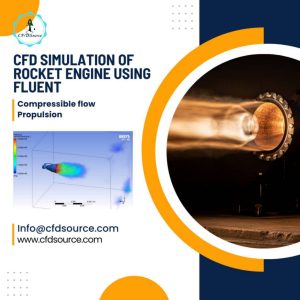In today’s rapidly evolving aerospace landscape, the integration of advanced technologies plays a pivotal role in driving unprecedented progress. Among these technologies, Computational Fluid Dynamics (CFD) stands out as a transformative tool that has revolutionized how engineers and researchers approach aerospace projects. In this comprehensive exploration, we delve deep into the realm of CFD projects within the aerospace industry. We will uncover their significant implications, wide-ranging applications, and profound contributions to innovation that continue to shape the future of aerospace engineering.
read more : CFD Consulting Services
Introduction to Computational Fluid Dynamics (CFD)
At the core of modern aerospace advancements lies Computational Fluid Dynamics (CFD), a field that employs numerical analysis and advanced algorithms to simulate fluid flow and heat transfer. This dynamic discipline has evolved into a crucial instrument, granting engineers and scientists unparalleled insights into the intricate behaviors of fluids.
The Significance of CFD in the Aerospace Industry
In an industry where the fusion of safety, efficiency, and performance is paramount, CFD emerges as a game-changing protagonist. Traditional experimental methods, including wind tunnel testing, have their limitations. CFD offers an ingenious solution—a virtual environment for testing and optimization, which proves cost-effective and versatile.
A Glimpse into CFD Applications in Aircraft Design
Unveiling the Complexity of Aerodynamic Analysis
CFD simulations enable a comprehensive exploration of aerodynamic phenomena, allowing engineers to meticulously dissect lift, drag, and maneuverability of aircraft. By visualizing intricate airflow patterns, designers gain the insights needed to fine-tune wing shapes for optimal performance.
Navigating Structural Integrity Assessment through CFD
Beyond its role in aerodynamics, CFD assists in deciphering the structural integrity of aircraft. It aids in identifying stress concentration points, areas of turbulence, and potential vibrations, thereby contributing to prolonged aircraft lifespan and passenger comfort.
Enhancing Engine Performance with Computational Precision
In the realm of engine design, CFD models combustion processes and exhaust flow dynamics. The result: heightened engine efficiency, reduced emissions, and an overall improvement in propulsion system performance.
CFD’s Far-reaching Influence on Spacecraft Development
Mastering Thermal Management Systems with CFD
The intricate dance of heat within spacecraft is a critical challenge. CFD simulations pave the way for effective thermal management system design, preventing overheating of sensitive components and ensuring operational efficiency.
Propulsion System Optimization: A CFD-Driven Quest for Efficiency
The optimization of propulsion systems owes much to CFD’s predictive prowess. By analyzing thrust generation and exhaust dispersion, CFD ensures optimal propulsion under a myriad of atmospheric conditions.
Simulating Re-entry and Landing: A High-Stakes Endeavor with CFD
Spacecraft re-entry is a high-stakes affair, fraught with intense heat and pressure. CFD allows engineers to meticulously simulate and analyze these extreme conditions, guiding the development of heat shields that ensure safe re-entry and controlled landings.
Breaking Boundaries with CFD in Hypersonic Research
Designing Hypersonic Vehicles: A Symphony of Speed and Safety
CFD plays a pivotal role in designing and optimizing hypersonic vehicles capable of traversing incredible speeds. By simulating airflow at hypersonic velocities, engineers unlock insights that lead to safe, efficient, and groundbreaking designs.
Conquering Extreme Temperatures: CFD’s Role in Thermal Protection
The challenge of withstanding extreme temperatures during hypersonic flight is met head-on by CFD. By modeling heat distribution and assessing materials’ behavior, engineers craft innovative thermal protection systems that safeguard both vehicle and crew.
Decoding the Boundary Layer: A Key to Hypersonic Flight Stability
CFD’s role extends to the intricacies of boundary layer transition during hypersonic flight. By dissecting the shift from laminar to turbulent flow, engineers gain the understanding needed to maintain vehicle stability and optimize performance.
Navigating Challenges and Charting Future Avenues of CFD in Aerospace
The journey of CFD in aerospace is not without challenges. While it has undeniably revolutionized aerospace engineering, there is a continuous pursuit of heightened accuracy and reduced computational time. Overcoming these hurdles is poised to usher in a new era of more complex and accurate simulations, fostering innovation that continues to reshape aerospace technology.
Concluding Remarks: CFD’s Enduring Legacy in Aerospace Engineering
In the ever-evolving narrative of aerospace engineering, CFD projects have emerged as beacons of innovation, guiding the industry to unprecedented achievements. From streamlining aircraft design to enhancing propulsion systems and enabling hypersonic exploration, CFD’s contributions are indelible. As we soar toward new horizons in aerospace, the legacy of Computational Fluid Dynamics remains a testament to the power of simulation-driven progress.



